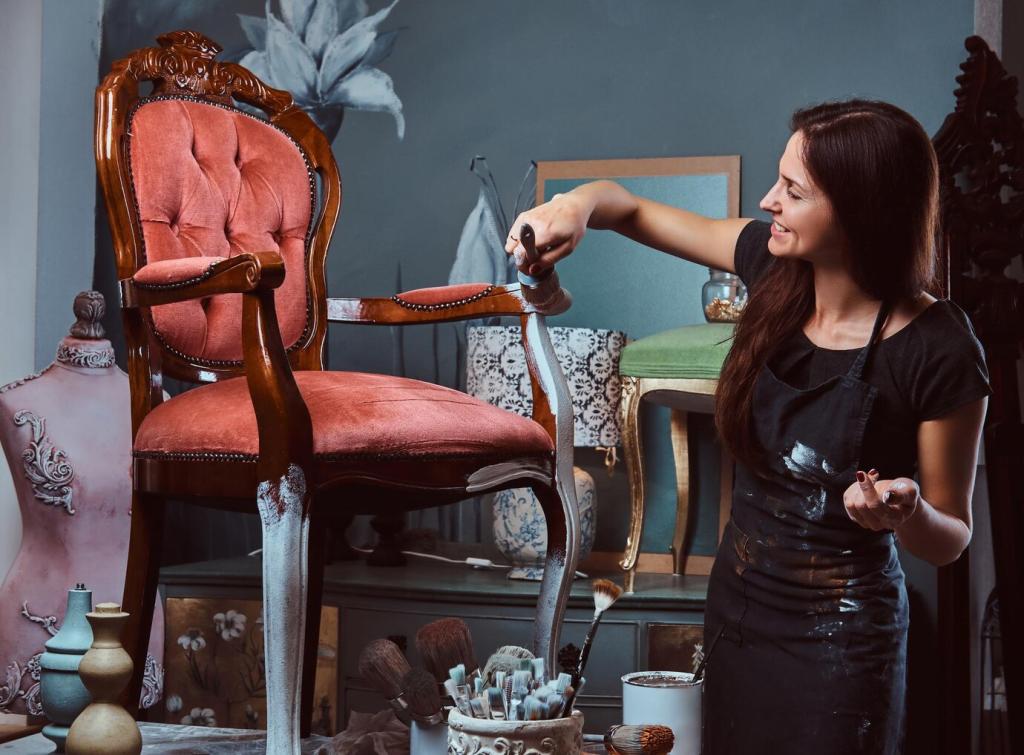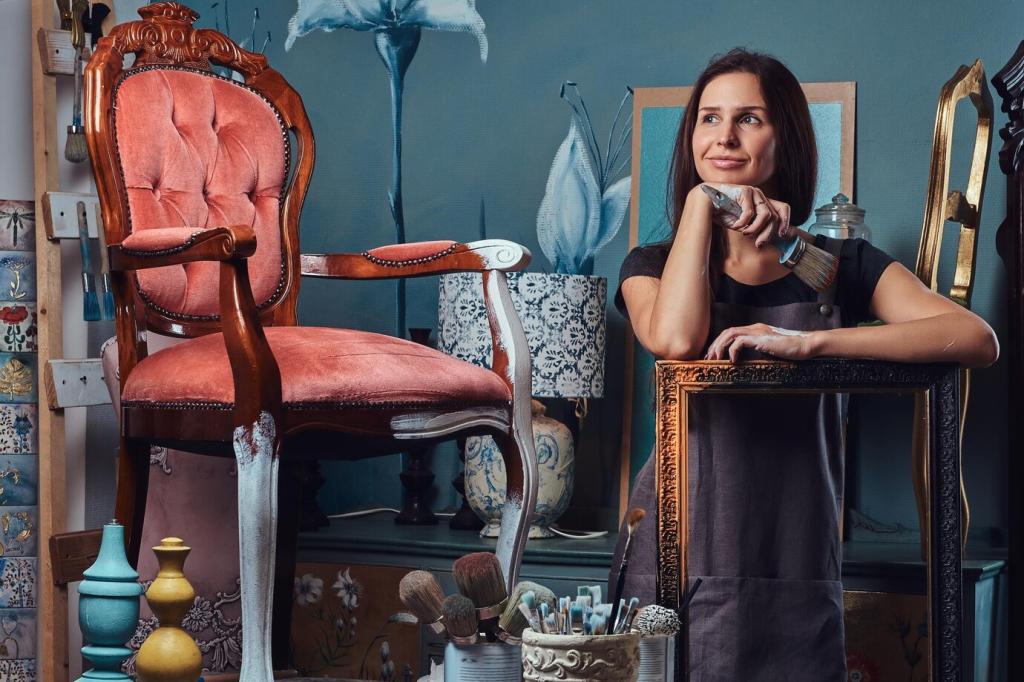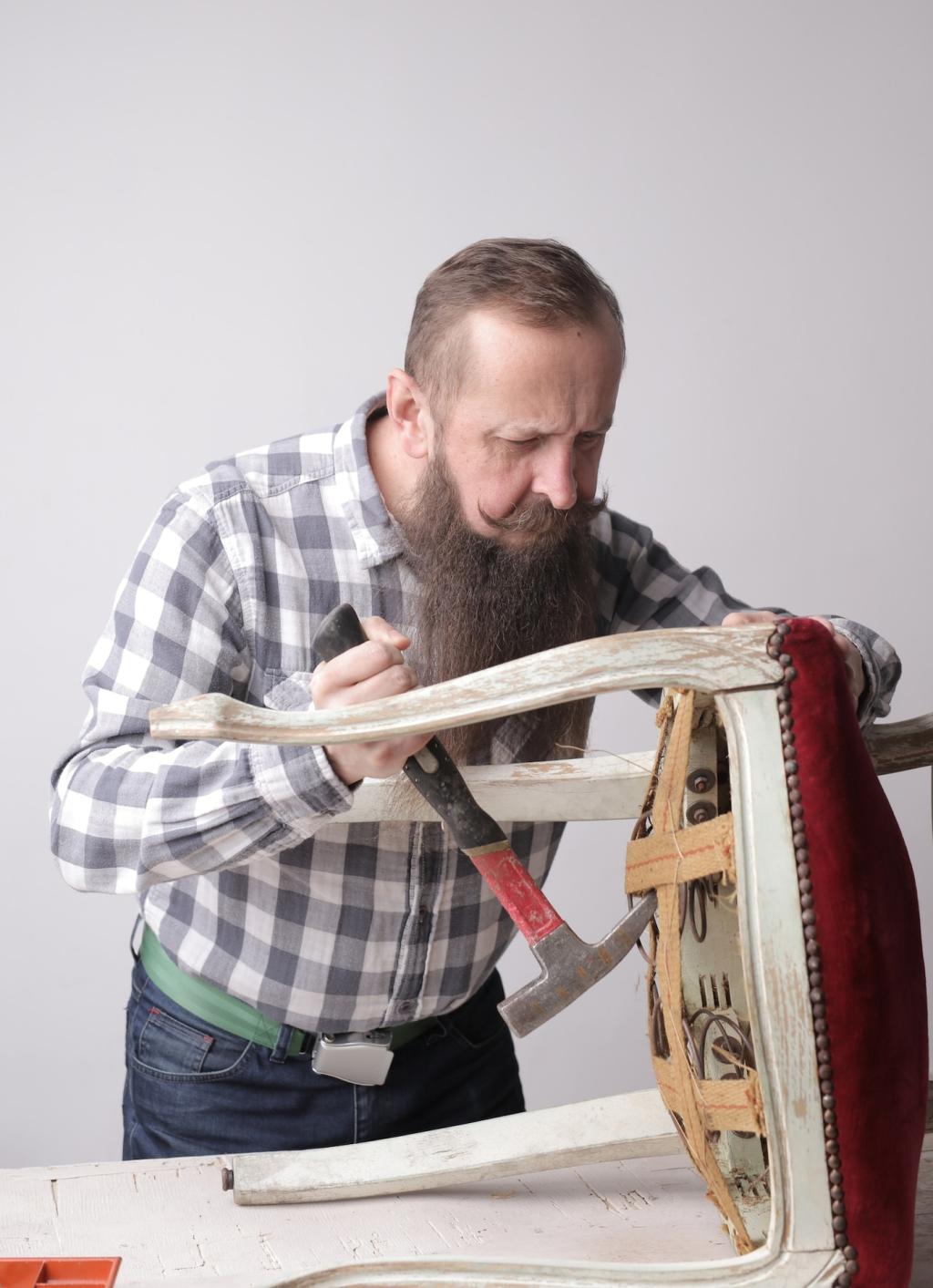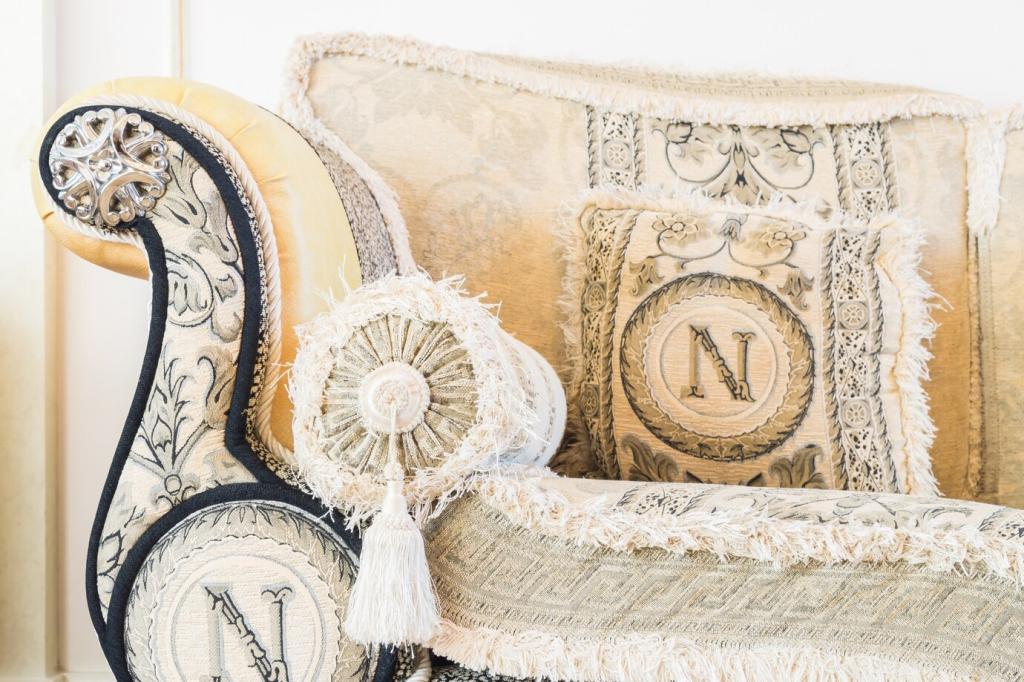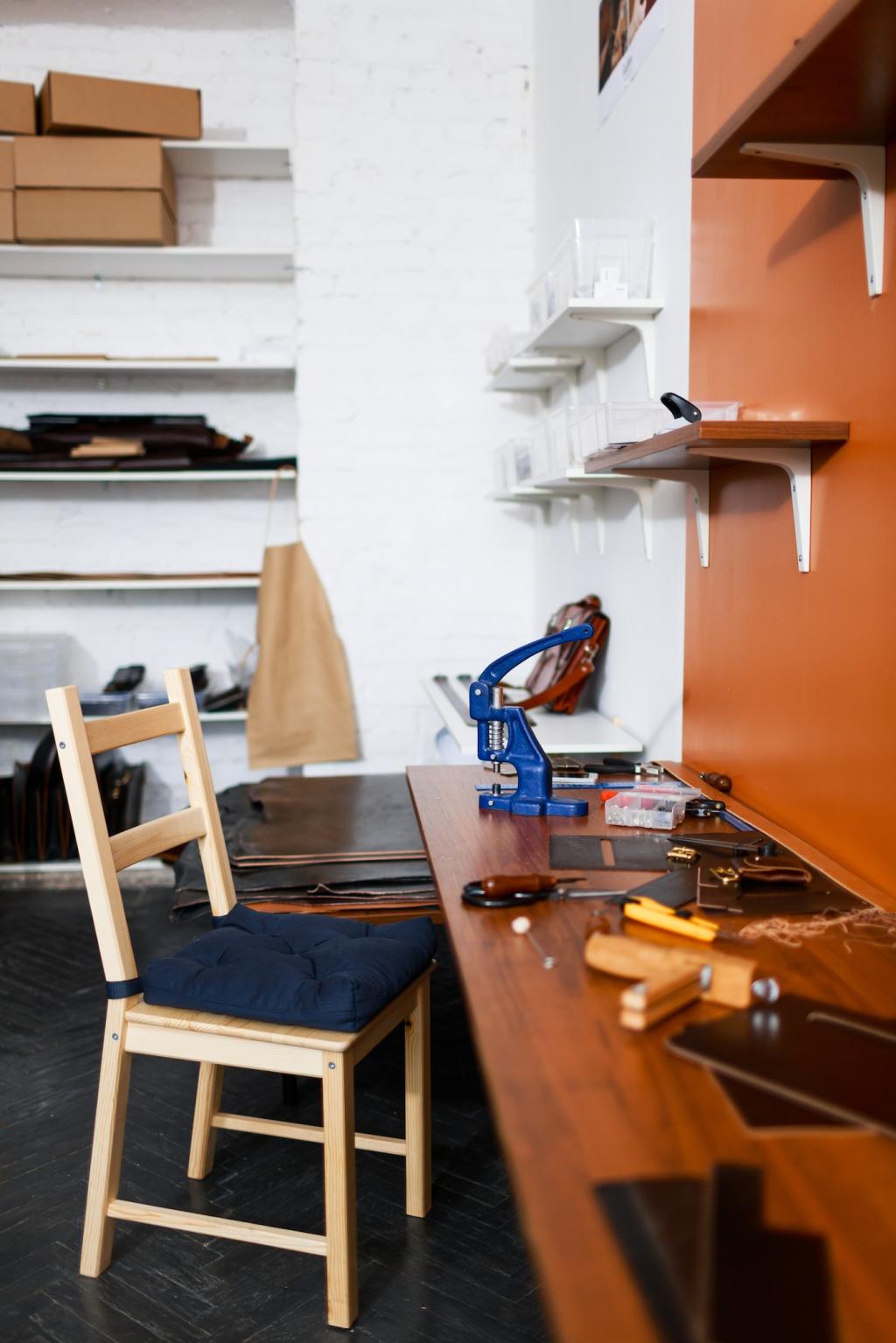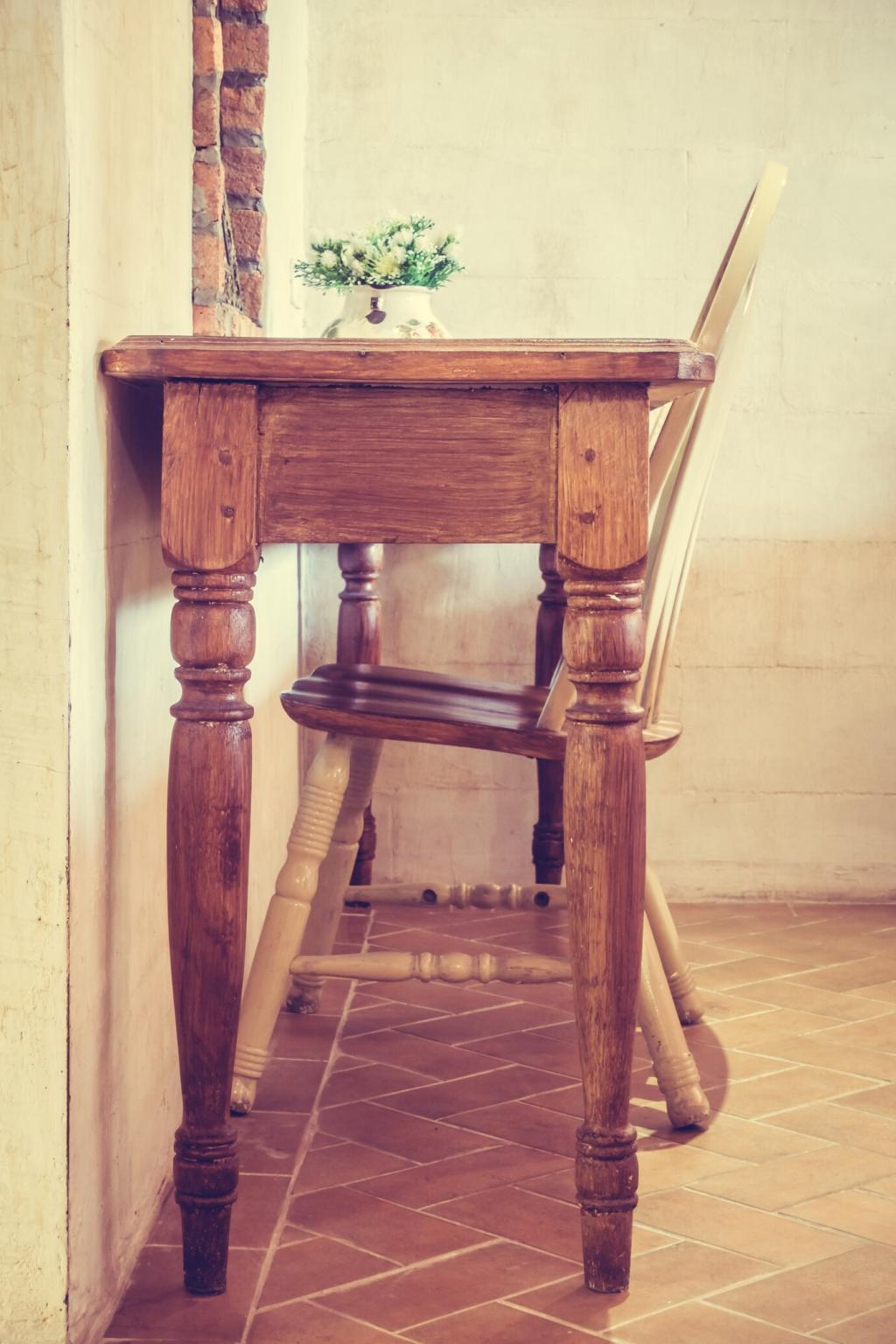Hardware, Inlays, and Mixed Surfaces: Clean Without Cross-Contamination
If possible, remove hardware and label each screw’s location. Clean with mild soap first; then use a gentle metal polish sparingly, avoiding ammonia around wood. Keep polish off adjacent finish by masking edges with low-tack tape. A thin coat of microcrystalline wax protects the metal without lacquer’s maintenance headaches.
Hardware, Inlays, and Mixed Surfaces: Clean Without Cross-Contamination
Treat marble and stone with pH-neutral cleaners or distilled water; avoid vinegar or citrus. For stains, a poultice may help—protect surrounding wood with tape and absorbent barriers. Glass responds well to water and microfiber, sprayed onto the cloth, never the surface. Share your mixed-material puzzles for crowd-sourced solutions.

